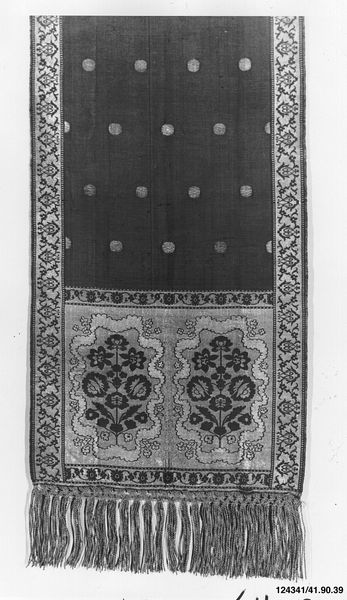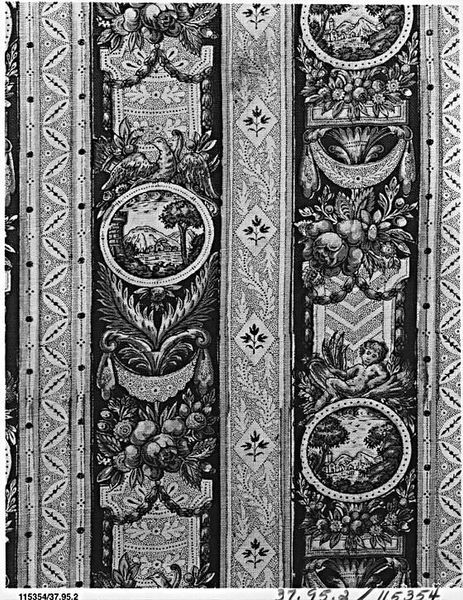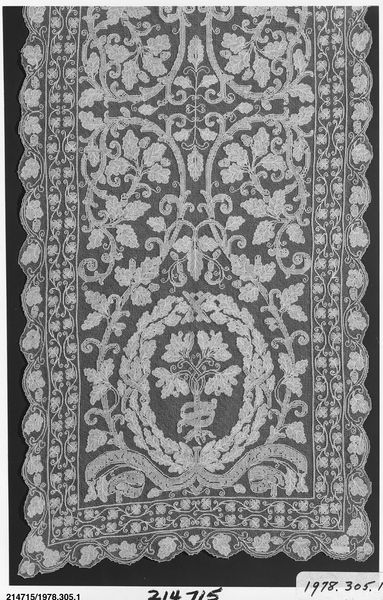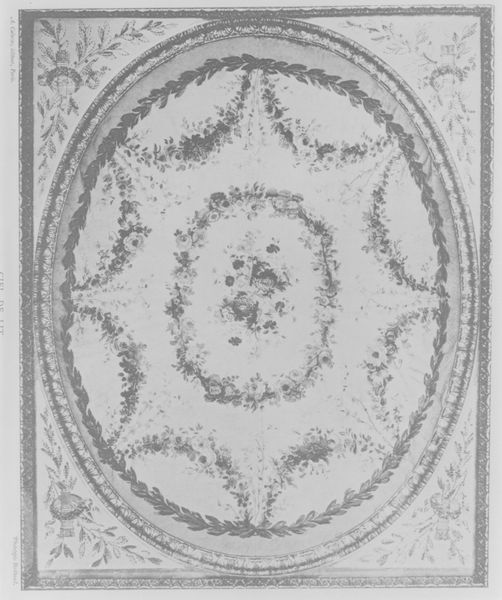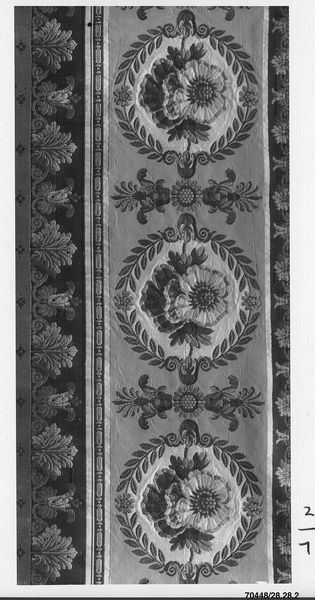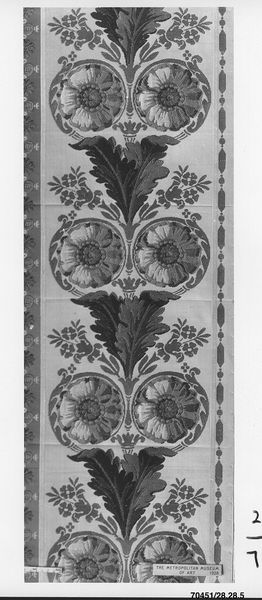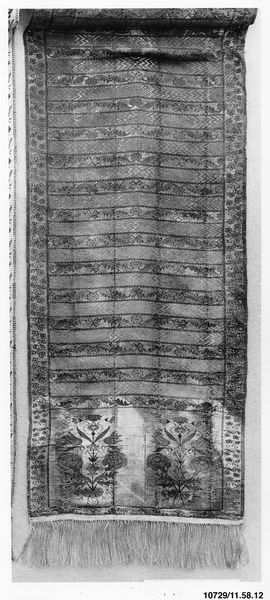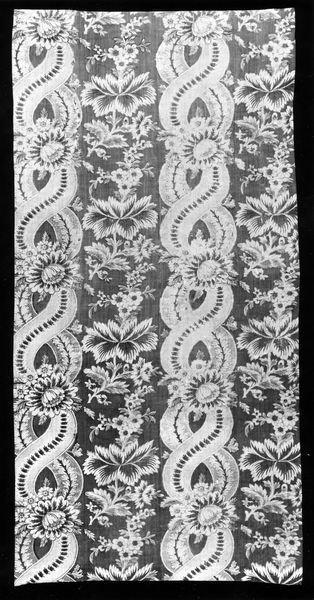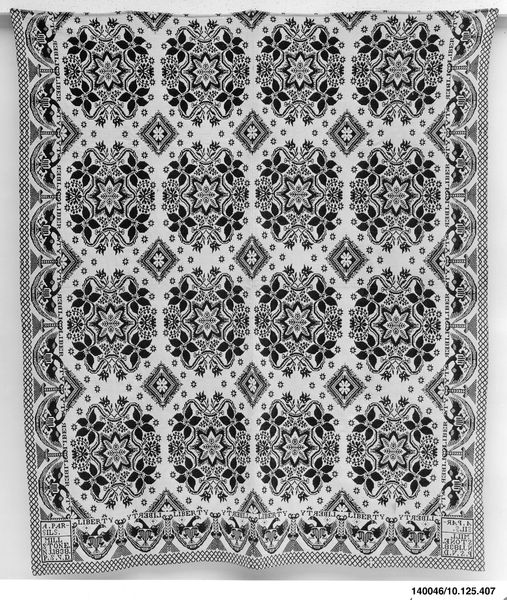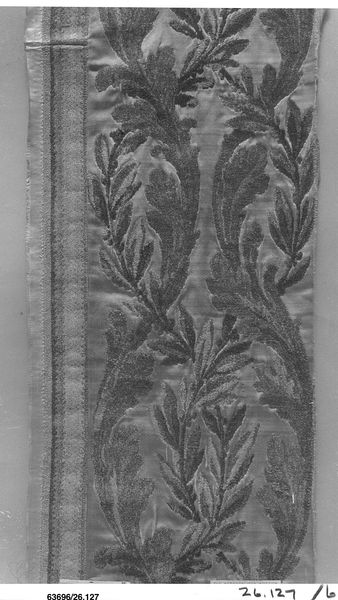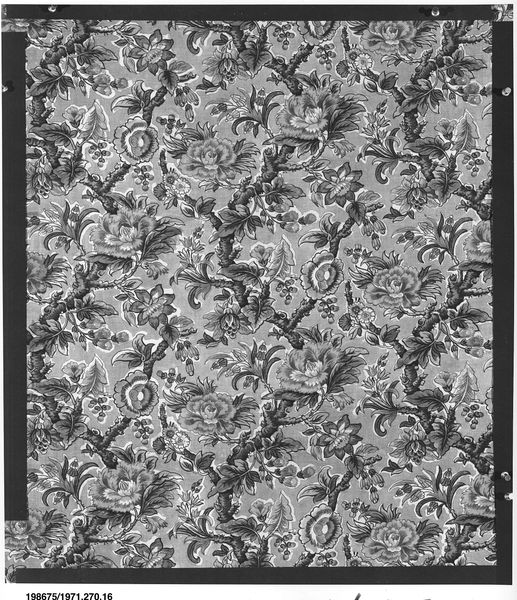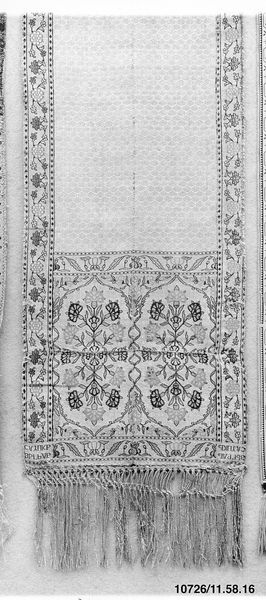
weaving, textile
#
pattern
#
weaving
#
textile
#
abstract
#
folk-art
#
geometric
#
repetition of pattern
#
united-states
Dimensions: 67 1/2 x 36 1/2 in. (171.5 x 92.7 cm)
Copyright: Public Domain
Curator: This is an American hooked rug, dating from 1787 to 1790. It's currently held in the collection of the Metropolitan Museum. Editor: It looks... surprisingly modern? Those repeating semicircles, almost like scales. They make me think of art deco somehow, even though it predates the style by over a century. Curator: Well, consider the means of production. We're talking about early American folk art; the techniques available would dramatically impact the resulting aesthetic. Each loop carefully placed, securing raw materials likely sourced locally... think of the labor involved. It blurs lines between function and pure visual art. Editor: I suppose. There's a warmth to that repetitive craft, a kind of grounding that a machined item simply can't have. I imagine someone painstakingly crafting this, filling a cold room with a splash of pattern and softness. You know, there’s also something meditative about such repetition. Almost hypnotic. Curator: Exactly! This repetition wasn’t necessarily about sterile precision but a rhythm created through the repeated action of labor. That's important here. This repetition of pattern hints at structure, even within apparent simplicity. Its charm arises directly from the limitations, transformed through necessity. Editor: Right. So it's not about grand pronouncements but quiet acts of making. Something truly democratic in its scope because pretty much anyone with the skill set can create this for themselves. It transforms something necessary, utilitarian even, into art. And the imperfections would become part of its inherent beauty and story. It reminds me, it reminds me that true artistry often lies where we least expect it. Curator: And also reminds us how everyday items encode economic conditions and the realities of material availability. Look closely—see the different shading or hue of raw materials? It really is something else when you think of what all went into this seemingly ‘simple’ art. Editor: Agreed. After all, isn’t it through careful making, thoughtful creation and hard work that all objects become something beyond the immediate usefulness? I see a soulfulness here that transcends the utilitarian… a story beneath our feet.
Comments
No comments
Be the first to comment and join the conversation on the ultimate creative platform.
